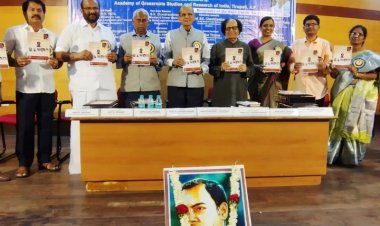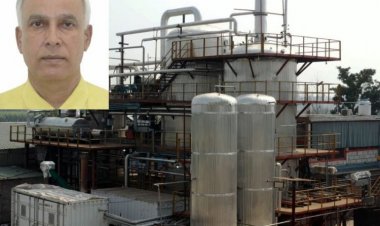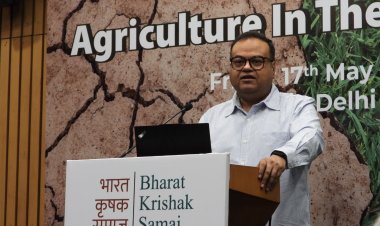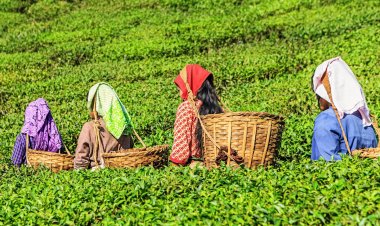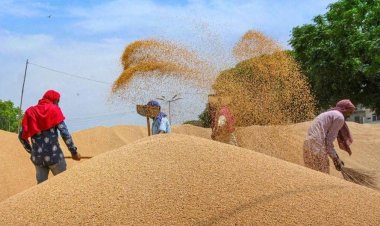Farmers getting good Basmati prices, but yield declines due to rain
Although the farmers in Uttar Pradesh, Punjab, Uttarakhand and Rajasthan are getting good prices for Basmati, the heavy rain in September and October has caused them much loss. Not only has the yield declined but also the rice quality has been affected. The Basmati crops of many farmers were completely ruined.

Although the farmers in Uttar Pradesh (UP), Punjab, Uttarakhand and Rajasthan are getting good prices for Basmati, the heavy rain in September and October has caused them much loss. Not only has the yield declined but also the rice quality has been affected. The Basmati crops of many farmers were completely ruined. Basmati rice is exported from India to about 150 countries.
Farmers say that they are getting prices of Rs 3,700-Rs 3,800 per quintal for Pusa Basmati 1121 and Pusa Basmati 1 in mandis and rice mills. The prices of other varieties, including Pusa Basmati 1509 and Pusa Basmati 1692, are as high as Rs 3,200-Rs 3,500 per quintal.
Pritam Singh, a farmer from the Nekpur village in Bulandshahr district of UP, said that Pusa Basmati 1121 and Pusa Basmati 1 are fetching prices of Rs 3,800-Rs 4,000. Last year, these varieties fetched up to Rs 3,200-Rs 3,300. While other varieties, including Pusa Basmati 1509, had fetched prices of Rs 2,600-Rs 2,800 in the mandis last year, they are selling at Rs 3,200-Rs 3,500 this year.
Singh said that due to the good prices they got last year, farmers from his village had cultivated different Basmati varieties in an area of more than 400 acres this year. The per acre yield stood at 22-24 quintals every year, but it is only 16-17 quintals this year. Singh said that the rain in September and October had caused losses of up to 30 per cent in yields. “Hence we’ll not be able to get the profit that we should have.”
Bachchu Singh, a farmer from the Sal Baajna village in Mathura district, said that the Pusa Basmati 1121 variety was fetching the highest prices in the Aligarh mandi at Rs 3,600- Rs 3,700 per quintal. Other varieties are fetching Rs 3,200-Rs 3,300 per quintal.
Singh had cultivated the paddy crop on six acres. The farmers in the village together had grown the paddy crop on about 800 acres. Singh said that the crops had fallen due to the rain in September and October and this blackened the paddy. “While we were used to getting yields of up to 20 quintals per acre, this year we have obtained only 10-12 quintals from several fields. As a result, we won’t get the advantage of the higher prices. Many of the farmers won’t even be able to break even.”
Rakesh Kumar, a farmer from the Jainpur village in Sonipat district of Haryana, said that he had grown the Pusa Basmati 1121 variety on 10 acres. This variety is currently trading at Rs 3,800 per quintal in the Sonipat mandi. Other varieties are fetching Rs 3,300-Rs 3,500 per quintal.
Said Rakesh, “We obtained yields of 20 quintals per acre for Basmati 1121 every year, but the October rain this year has made the yields fall to 12-13 quintals per acre.” He said that the early-maturing Basmati varieties had been less affected.
Dr Ritesh Sharma, Principal Scientist, Basmati Export Development Foundation, Modipuram, Meerut, said, “The rains in September and October have affected the quality of Basmati. Rice breaks more during milling due to greater moisture content.” He said that if there was a deterioration in quality, Basmati export would get affected. He added, “The craze for Basmati farming is increasing in farmers, due to which its area is increasing by 10 per cent every year. An increase in demand abroad is also fetching better prices to the farmers.”



 Join the RuralVoice whatsapp group
Join the RuralVoice whatsapp group



















